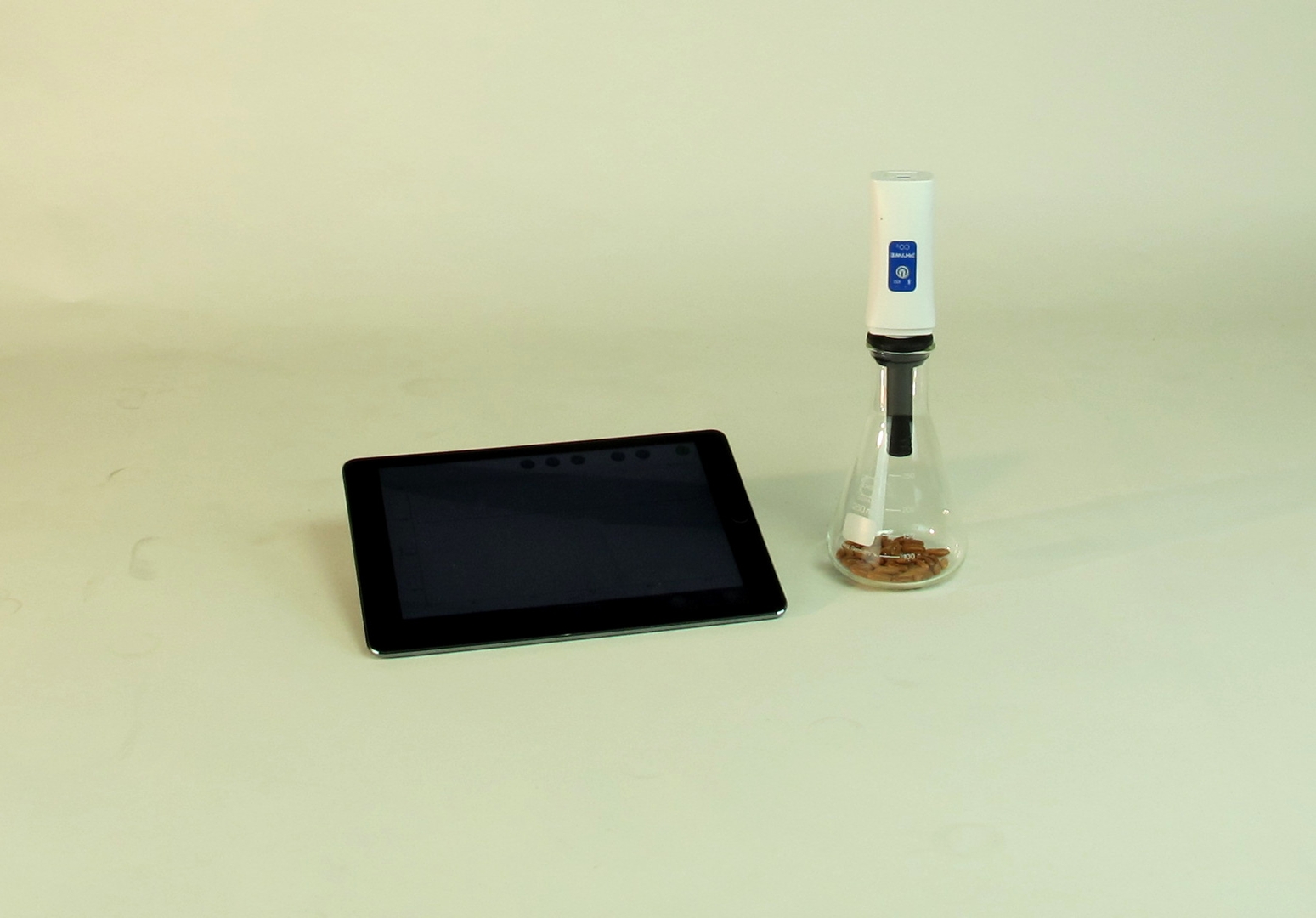Principle
Plant seeds are often in a dormant state for months, but as soon as optimal growth conditions are achieved, the seeds begin to ripen. They need energy to grow into a complete plant, which can be provided by cellular respiration, for example. Cell respiration describes a process in which stored energy in the form of organic molecules, such as glucose, is converted into immediately usable energy. During this process oxygen and carbohydrates (glucose) are consumed and carbon dioxide, water and energy are produced.
Benefits
- Especially understandable and didactically prepared description of the experiment (reference to everyday life etc.) including protocol questions
- Future-oriented teaching: Integration into digital science lessons with tablets or smartphones
- Increased motivation of students by using the intuitive measureAPP
- Increased media competence
- Compact, easily transportable experimental set-up
- Suitable for demo experiments and practical training
- Flexible test execution thanks to wireless data transmission
Tasks
- Measurement of the carbon dioxide content of dormant and germinating pinto beans
- Discussion of the differences between the measurement curves
Learning objectives
The students are to study the carbon dioxide content of plant seeds to introduce them to the concepts of plant respiration, germination and energy.

